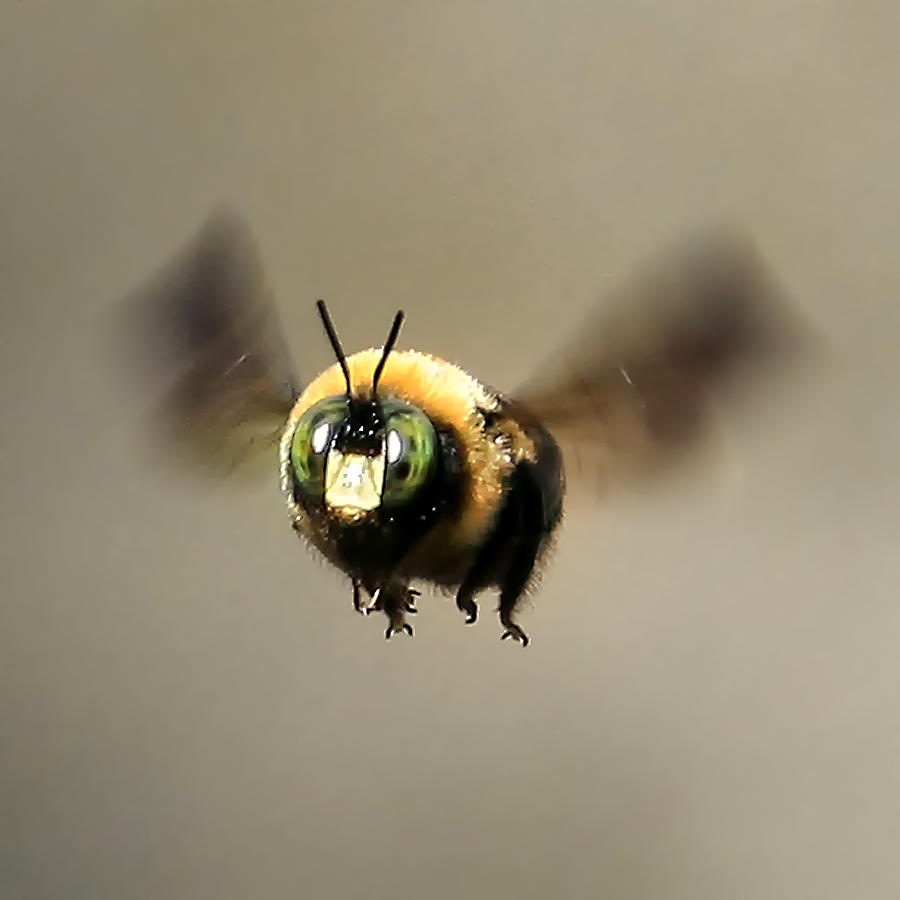
Honey bees build a large nest (hive) consisting of several wax combs for their brood If interested in more details of keeping honey bees and the production of hives, contactįigure 1.
FUZZY BLACK BEE HOW TO
Several books have been writtenĬoncerning the life cycle and social behavior of honey bees and how to raise them. Honey bees also attract the interest of manyĪmateur beekeepers who may keep only one to 10 hives. Individual commercial beekeepers maintain more To honey production, the honey bee provides an estimated $20 billion annually from Generally associated with anaphylaxis (allergic reaction to the venom). Half the deaths attributed to bee and wasp stings in the U.S. Honey bees are responsible for most human bee stings and approximately This cosmopolitan species is not native to North America, but was originally importedįrom Europe. The honey bee (Figure 1) is probably the most familiar and well studied social insect. Bees provide their nests with nectar and pollen that is used as food for the These hairs are concentrated on the bee’s abdomen and legs, and help them collect

Bees are closely related to wasps,īut have many microscopic, feather-like hairs that give them a hairy or fuzzy appearance. They are more of a stinging hazard than other bees. Because of their abundance and close proximity to human habitation, Honey bees are raised commercially for honey production and for use in pollination Honeyīees are pollinators of many plants and are important in agricultural crop production. The most common social bees are honey bees and bumble bees. Often, social bees occur in large colonies and can be a possible There are more than 20,000 known species of bees, but only 5 percentĪre social bees. Varroa Mite – An Important Pest of Honey Bee Coloniesīees belong to the order of insects called Hymenoptera, which also includes ants,.Africanized Honey Bee ( Apis mellifera).was used in the generation of this content site is 100% curated by humans. Please direct all inquiries and comments to insectidentification AT. When emailing please include your location and the general estimated size of the specimen in question if possible. Images in JPG format are preferred with a minimum horizontal dimension of 1000px if possible. By submitting images to us () you acknowledge that you have read and understood our Site Disclaimer as it pertains to "User-Submitted Content".

Material presented throughout this website is for entertainment value and should not to be construed as usable for scientific research or medical advice (regarding bites, etc.).Please consult licensed, degreed professionals for such information. The logo, its written content, and watermarked photographs/imagery are unique to this website (unless where indicated) and is protected by all applicable domestic and international intellectual property laws. While observers can get close, the Black-tailed Bee Fly is quite aware of its surroundings and can bolt away so quickly, they are difficult to catch.©īeetle Identification Butterfly Identification Caterpillar Identification Spider ID Fungal Infections on Insects Nursery Web Spider Official State Insects Termite Basics Insect Molting Process Bugs of Tennessee House Males then dart after the female in the hope of mating with her. Males will often hover over flowers while waiting for a female to pass by. They are able to hover over the flowers they drink from, much like a hummingbird. They can be found in open fields, backyards and parks, either resting on plants or buzzing over blossoms. This species is most active in the summer on sunny days. They will then pupate in that nest and eventually emerge as adults in the summer. Once they eat the competition, they go on to eat any food stores left by their mother. The Black-tailed Bee Fly larvae hatch and eat the larvae of the resident bees, making them parasites. Female Black-tailed Bee Fly lays her fertilized eggs in the ground nests of certain solitary bee species. They also lack fuzzy legs typically found on the hind legs of honeybees and bumble bees.Īdults drink flower nectar and are fond of lilac and plum flowers. Bee Flies also have long, thin legs that lack pollen baskets. The long proboscis ('tongue') quickly gives away its true identity. This is a fly, though, so it does not have a stinger. The yellow body and legs are colors that typically warn off predators that do not want to deal with a stinger.

The Black-tailed Bee Fly is a hairy, hovering, and buzzing mimic of a bumble bee.


 0 kommentar(er)
0 kommentar(er)
